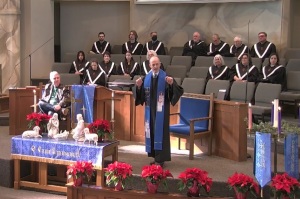How Japan's 'Hidden Christians' Maintained Faith Despite 300 Years of Persecution
Christians in Japan have managed to maintain their faith, despite 300 years of persecution from the 16th to the 19th century.
The story of Japan's so-called "Hidden Christians" (kakure kirishitans) has only surfaced recently and the Western world has barely heard of it. They are now being exemplified by the Vatican as the Christians who have kept their faith even without the guidance of priests and the solid walls of churches, according to Christian Today.
The moving stories of the underground Christians of Japan are kept in the Vatican Library and Secret Archives. When missionary Fr. Mario Marega visited Japan in the beginning of the 20th century, he researched and gathered letters penned down on rice paper. These documents have been restored by the Vatican Library, the report details.
Christianity first arrived in Japan in 1549, and later on, a Christian Church flourished in the country. However, Shogun Toyotomi Hideyoshi was threatened by the growing influence of the church and began to persecute the Christians. His successor Tokugawa Ieyasu later on outlawed Christianity. In the years that came, Christians experienced brutal persecrtion, and some witnesses reported seeing men, women, and children alike being burned alive. Some were hung in a hole half full of excrement and forced to recant their faith.
Christian missionaries were later on banned from coming to Japan, and those who were caught were tortured and forced to renounce their faith. One of the most popular ways of determining if an individual was a real Christian was to order them to trample on the "fumie," or an image of either Jesus or the Virgin Mary, NPR reports.
Nevertheless, the kakure kirishitans were undeterred and still practiced their faith in secret. They disguised their prayers as Buddhist chants and some of their practices were mixed with Buddhism and Shintoism. They also removed crosses and even got rid of churches to avoid persecution. The underground Christians instead opted to gather in houses for their religious services.
After almost three centuries, Christianity was presumed to be extinct in Japan. But in 1865, villagers in Nagasaki told a priest in a church there that they had maintained and secretly practiced their Christian faith for 250 years. It turned out that there were tens of thousands of Christians still left in Japan. Some of them chose to join the Catholic Church, but there are still other who still choose to maintain their status as Japan's Hidden Christians.




























